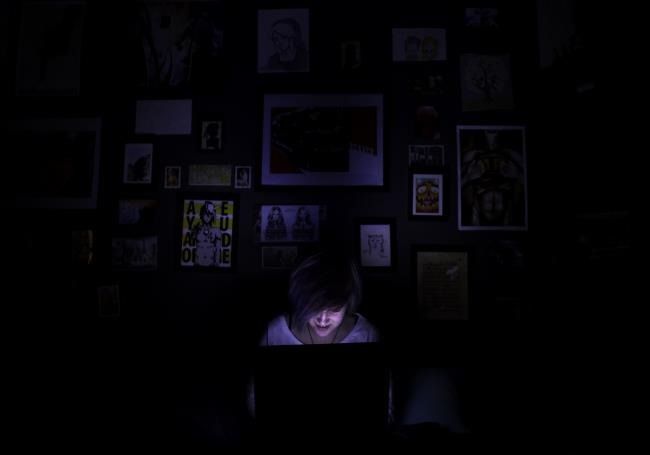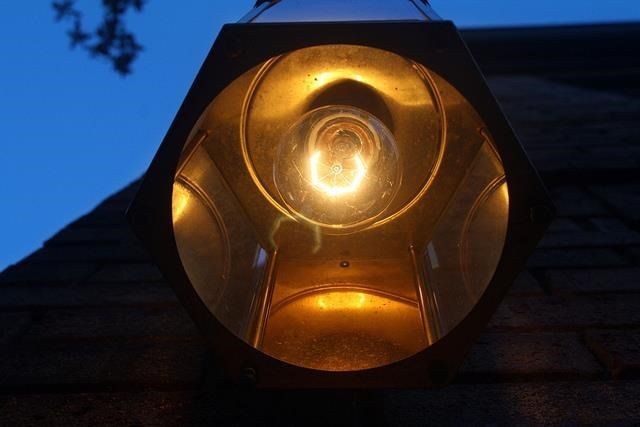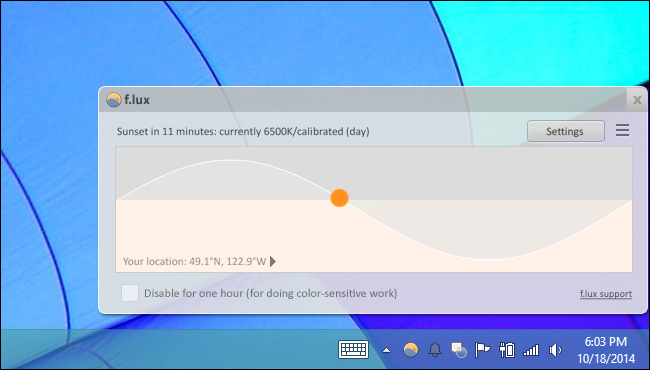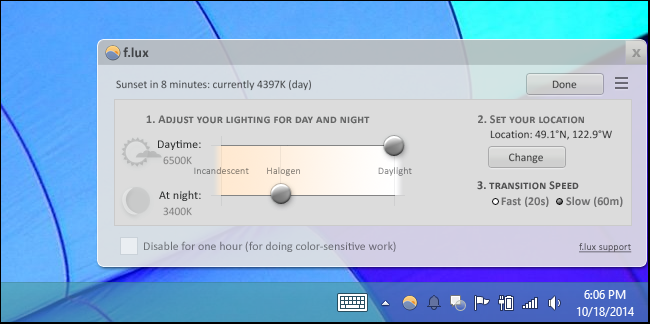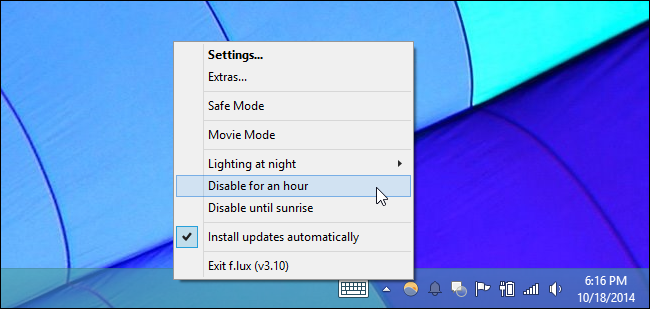Quick Links
f.lux changes the color temperature of your computer's display depending on the time of day. Everything's normal during the day, but f.lux users warmer colors after sunset to match your indoor lighting.
This free tool is available for Windows, Mac, and Linux, and it's most often used on laptops and desktops. However, f.lux can also be used on iPhones and iPads if you jailbreak, and there are similar utilities available for Android.
The Theory Behind f.lux
The lighting of the world around us changes depending on the time of day. During the day, we're exposed to bright sunlight that has a cool, blue color temperature. This helps keeps us awake and affects our circadian rhythms. At night, the bright sunlight is gone -- instead, we're using indoor lighting that is generally dimmer and warmer. Our brains secrete melatonin during these darker hours when we're not exposed to sunlight, causing us to get sleepier.
But our computers didn't get the message. The theory is that staring at these bright, sun-like screens -- late into the night or morning, as many of us do -- strains our eyes and inhibits melatonin production. Yes, some computers have brightness sensors and will adjust the screen brightness depending on how bright it is around you, but the color temperature doesn't change.
f.lux will use warmer colors at night than during the day, making white colors appear a bit more reddish. The theory is that looking at a warmer display at night will help reduce eye strain, and -- because you're not staring at a bright, sunlight-like screen -- cause your brain to secrete more melatonin and help you get to sleep earlier and sleep better.
Just look at the blue glow you see coming from a screen at night, and then compare it to the warmer, redder glow coming from a typical light bulb. f.lux aims to make that blue glow more of a reddish glow. Here's a good illustration of the Kelvin color temperature scale, which is used to quantify color temperature.
Does It Actually Work?
We just covered the promise of f.lux, anyway. Some people just use f.lux because it makes their screens easier on the eyes, some use it because they think it helps them sleep better, and some use it for both reasons. But, obviously, we can't just trust these claims without looking at the science behind them.
Unfortunately, there have been no scientific studies of f.lux itself. However, a variety of studies have found that being exposed to bright blue light can affect your sleep schedule. Subjectively, many of us have realized that staying on the computer staring at a bright screen late at night keeps us awake, while stepping away from that screen helps make us more tired.
f.lux's website has information about research in the area. While we can't say f.lux's claims have been scientifically proven, we can certainly say they seem plausible.
How to Get Started With f.lux
f.lux is free to download and use, so you can try it out for yourself if you're curious.
- Windows, Mac, and Linux: Grab f.lux from the official website and install it.
- iPhone and iPad: You'll have to jailbreak your iOS device and get this software from Cydia if you desperately want it. Apple's restrictions prevent software from doing this. However, Apple has its own very f.lux-like feature built into iOS 9.3 called Night Shift that you can use instead.
- Android: You can get f.lux for Android, but it's only available on rooted phones. Similar apps like Twilight are available for non-rooted devices.
f.lux isn't the kind of program you constantly fiddle with. Instead, you'll want to set it up once and then mostly forget about it.
It will try to automatically detect your location, but it doesn't work all that well. You'll want to go into the Settings screen to enter a more precise location. You can also adjust the desired light temperatures and choose a slow transition speed, so the colors on your screen will gradually change over 60 minutes instead of 20 seconds. Remember, you won't see any change until after sunset -- or up to an hour before sunset, if you choose the Slow transition speed.
f.lux also has various extra features. For example, it can automatically adjust the colors of Phillips Hue lights in your house, as well. The Mac version can even automatically enable OS X Yosemite's dark theme at night.
When You Might Not Want to Use f.lux
f.lux may not be something you'll want to use all the time. If you're a graphic designer who depends on accurate color reproduction for the work you do in Photoshop or another image-editing program, it will cause problems. When watching a movie or playing a game on your computer, you may prefer accurate reproduction of colors over the warmer colors f.lux provides.
To help with this, f.lux provides an easy option that allows you to quickly disable it for an hour or for an entire night. There's also a "Movie Mode" option that lasts two and a half hours after you enable it. As the official FAQ puts it: "We designed Movie Mode to preserve sky colors and shadow detail, while still providing a warmer color tone. It's not perfect on either count, but it strikes a balance."
f.lux doesn't make any permanent changes -- after you disable it, it will go back to the same color calibration your monitor was set to use.
f.lux may seem very pink at first, so be sure to stick with it for a while if you decide to give it a try. As the official FAQ puts it: "On first use, it can take a while to adjust to the halogen settings. Try adjusting the color temperature sliders under Settings until you find one you like. Start with fluorescent or halogen and change it when your eyes adjust."
This certainly matched my experience -- at first, f.lux looked very pink. After fifteen minutes, it started to look normal. And, after disabling f.lux, everything looked very blue.
Image Credit: Asher Isbrucker on Flickr, Michelle D on Flickr


